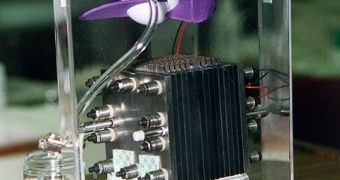Hydrogen-based vehicles are, at this point, a fairly uncommon occurrence, mostly because the designs are still plagued by engineering and technical issues. One of these problems is how to recycle hydrogen-containing fuel materials, so that they can be used again. Scientists from the Los Alamos National Laboratory (LANL) and the University of Alabama have recently managed to find a way to do this, by using chemical fuel tanks, filled with chemical hydrides. Their innovation is described more thoroughly in an article published in the September 1st issue of the journal Angewandte Chemie.
“This research represents a breakthrough in the field of hydrogen storage and has significant practical applications. The chemistry is new and innovative, and the research team is to be commended on this excellent achievement,” the LANL Chemistry division leader, Dr. Gene Peterson, says. All the investigations were made within the US Department of Energy's (DOE) Chemical Hydrogen Storage Center of Excellence. The results can now lead to newer generations of more efficient and cheaper hydrogen-fueled cars, which could become a real alternative to petroleum-fueled ones.
The main problem of pure hydrogen is energy density. It packs too little power in a compact tank, and falls short of powering a car for more than 300 miles on a single charge, which is a target set forth by the DOE. In order to exceed this limitation, scientists at the Center of Excellence turned to chemical hydrides, which are substances able to hold and release hydrogen, in amounts large enough to reach the DOE objective. Ammonia borane, for instance, can hold up to 20 percent its weight in hydrogen.
The chemical was extensively studied by the LANL/UA team, as experts tried to find ways of recycling it, for later use. In a breakthrough achievement, they discovered that a specific form of dehydrogenated fuel, known as polyborazylene, could easily be recycled into ammonia borane, using only a modest amount of input energy.
“Collaboration encouraged by our Center model was responsible for this breakthrough. At the outset there were myriad potential reagents with which to attempt this chemistry. The predictive calculations carried out by University of Alabama professor Dave Dixon's group were crucial in guiding the experimental work of Los Alamos postdoctoral researcher Ben Davis. The excellent synergy between these two groups clearly enabled this advance,” Los Alamos researcher John Gordon, one of the corresponding authors for the new paper, says.

 14 DAY TRIAL //
14 DAY TRIAL //